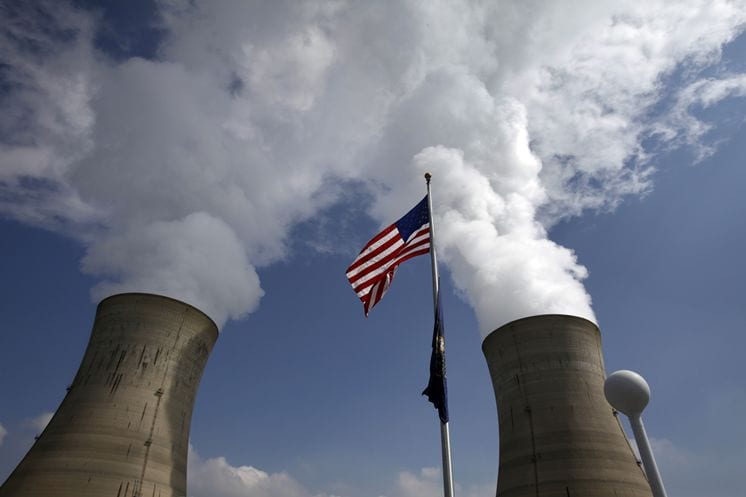In America’s Sunshine State (Florida) and nearby states of North Carolina, South Carolina and Georgia, proposals for new nuclear power plants stand in stark contrast to lower risk, less expensive energy alternatives. Consumers in these states have already donated $6 Billion to the utilities’ nuclear ambitions. The charges that can be collected without the consumer seeing a benefit are estimated for the reactors: Summer 2 & 3, (South Carolina) $10.4 billion; Vogtle (Georgia) $14.5 – $18.2 billion; Levy (Florida), $15.1 to $21.6 billion, and Turkey Point (Florida) $12.8 to $18.7 billion.
Costs and Risks, On You
The long and uncertain process for permitting and building nuclear power plants creates costs and risks. The utilities that continue to pursue nuclear power permitting and construction all have protections from their state regulators that the risks and costs for nuclear plant development will be paid by consumers, without regard to progress or success of these efforts. Utility consumers are paying for these plants through rate increases before the plants begin producing any energy. A UCS-sponsored study of costs projected the Levy power plant could add $700 to residential electric customers’ annual electric bill by the year 2021, which might be when the plant begins to produce electricity. What the final cost will actually be, no one knows.
Cheaper Cleaner Sooner, With You
There are much better energy investments available, that will provide benefits for everyone, right here in our homes and offices. Instead of constructing a power plant off in the distance to be ready at some unknown date, some utilities are making investments in their customers’ efficiency. This means better cooled homes when the air conditioning ducts don’t leak, and the heat from outside does not get in. In commercial buildings, this means smaller quieter electrical equipment, higher occupancy rates, and greater profits. Government and investment advisors provide guidance on this.
Despite the fact that the average cost to utilities for saving a kilowatt-hour of electricity is 2.5 cents and total cost is about 4 cents in 14 leading states, not every state is looking for this cheaper, cleaner, faster energy choice. Energy efficiency is not as well known in power supply planning in these states still waiting for nuclear power plant construction. As a percentage of statewide utility revenues, Georgia spends 0.16 percent, South Carolina 0.23 percent, North Carolina 0.5 percent and Florida 0.77 percent while the U.S. average is 1.6 percent and 12 states invest over 2.5 percent. This, like the choice to shift the nuclear power costs and risks to consumers, is a result of state policy.
Sunshine – Who can use that energy?
Over 7000 homes and buildings installed solar panels on their roofs last month in the U.S., and the month before and the month before. The boom in solar installations reflects decisions made by building owners, contracts agreed by solar suppliers, and support from the elected U.S. Congress and then-President George W. Bush.
One big driver for the increase in solar are the recent cost reductions from manufacturers around the world. In 2010 and 2011, the U.S. average installed price of solar PV has fallen 35 percent, and dropped another 27 percent in 2012. Solar PV panel prices have dropped by a whopping 60 percent since the beginning of 2011.
Another huge driver for all this solar going on to roofs is a purely American innovation—the panels are owned, financed and maintained by a third party. In addition to the utility selling electricity from a wire on the street, the solar companies are selling electricity from the solar panels on your roof.
Here is a map showing which states allow this 3rd-party power agreement. It seems there are states that have prohibited this kind of transaction between willing parties. Instead of banning the innovation of electricity generated at the customers’ location, these states and their utilities should develop a business plan that allows this sort of thing to grow and everyone to prosper. That seems more like the American way.
http://www.dsireusa.org/documents/summarymaps/3rd_Party_PPA_map.pptx
How to compare choices
There are lots of reasons to choose solar over nuclear. Solar power does not draw water from reservoirs or rivers. Solar power does not have safety risks that go on for years without being corrected. No waste from solar plants can be used to make bombs. But maybe I have already made up my mind. I have invested my own money to put solar panels on my own roof. My risk, my power supply, my choice.
Where nuclear power proposals do not face a test of competition or even comparison with alternatives, lawmakers should require utility regulators to have power companies conduct a comprehensive integrated resource planning process where energy efficiency and renewables are on a level playing field with other supply options.
If the owners of a nuclear power plant are willing to take a risk with their own money, maybe they don’t need to justify their choice. But if the money at risk is YOURS, and there is NO review, seems like the state government should get more involved in protecting the consumer.
This article was originally published on the Union of Concerned Scientists’ Equation blog. Reproduced with permission












